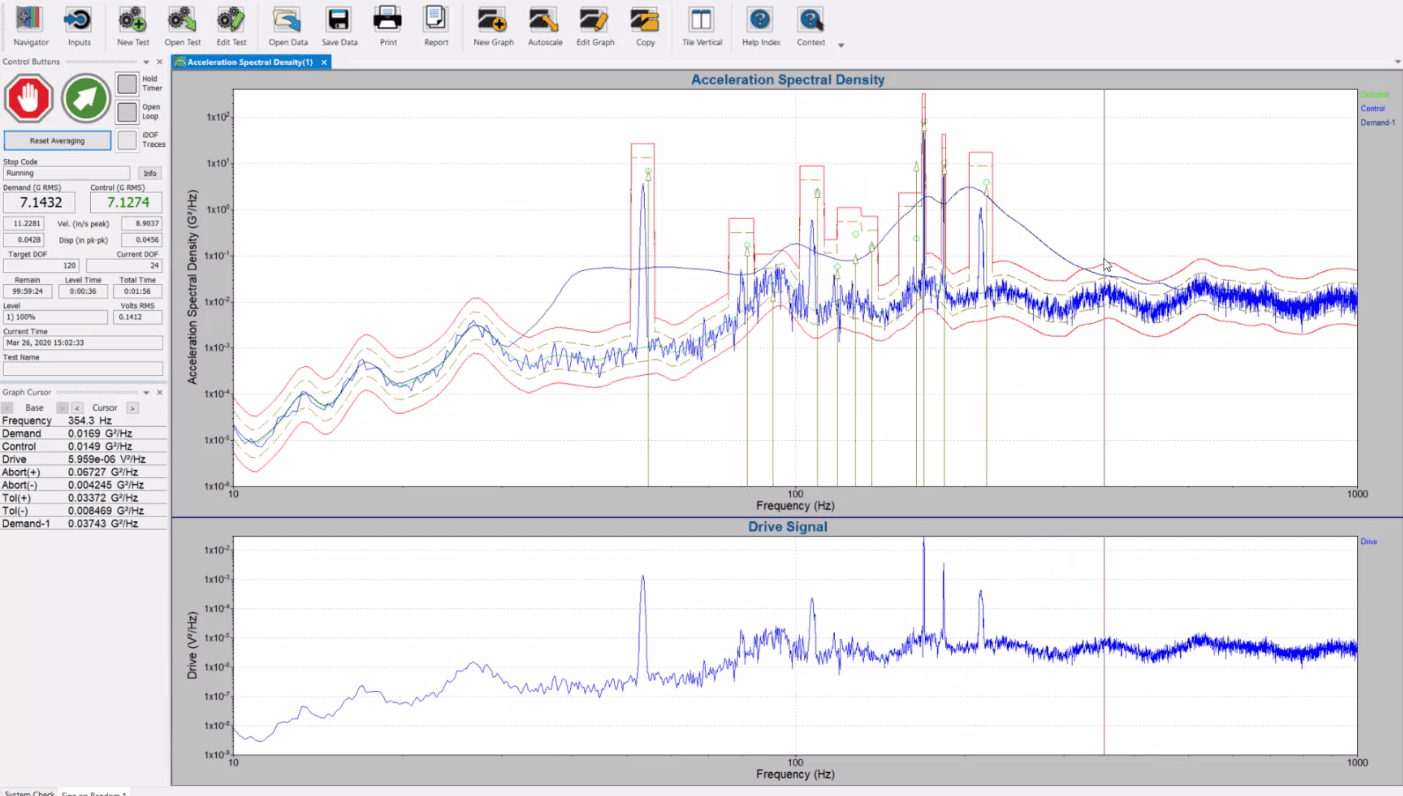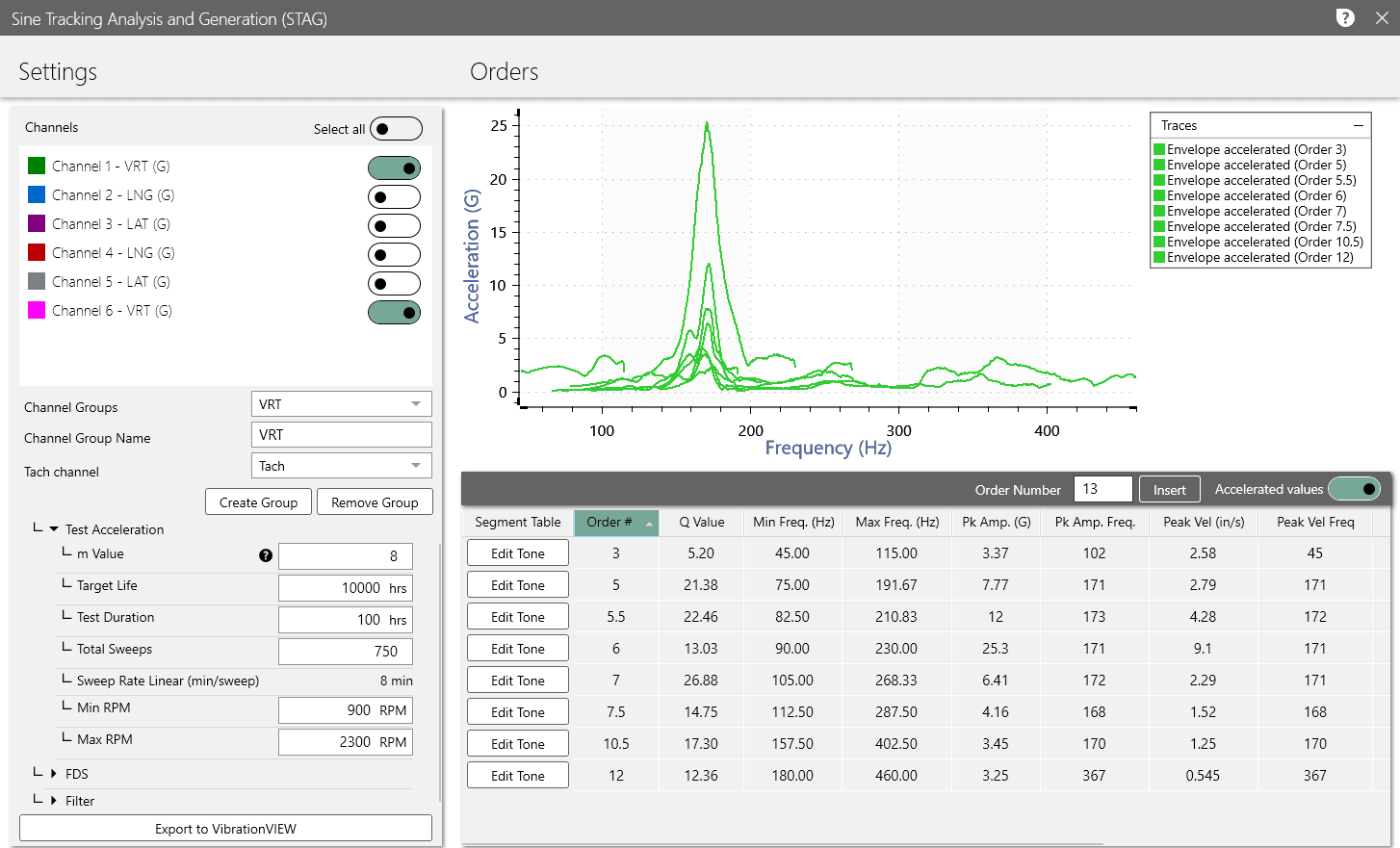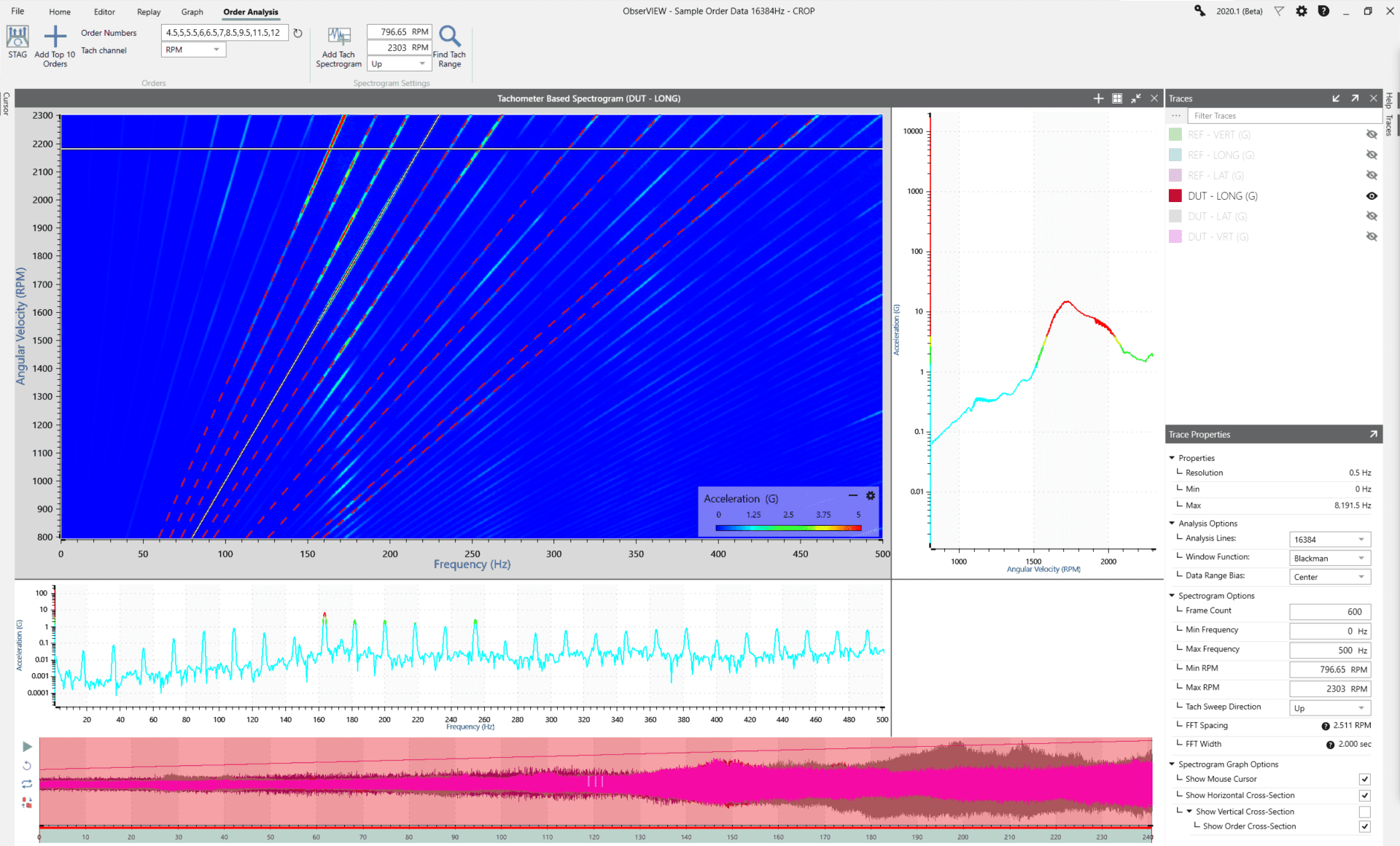SoR Test Profile Generation
STAG uses order analysis and extraction and sine tone profile creation and acceleration to isolate, extract, and create an accelerated sine profile or series of sine profiles from a recording. It employs the FDS software to analyze the remaining random vibration.
In combination with FDS, STAG allows for the analysis, generation, and acceleration of a realistic SoR vibration test.

STAG requires an Order Analysis and FDS license.
How it Works
STAG uses order analysis and FDS to ensure all vibration components are an accurate representation of the operational environment.
Order Extraction and Analysis
ObserVIEW extracts orders of interest from recordings. It separates the rotational content from the background random and then employs a tracking filter to remove unrelated data.
- Automatically detect or manually select top orders
- Analyze the frequency ranges where sine tones are dominant
- Minimize the low-amplitude content or concentrate on a particular peak
Sine Profile Acceleration
STAG generates one or multiple accelerated sine tone profiles using orders extracted from the original recording and user-defined parameters.

SoR Test Generation
STAG exports the data file to VibrationVIEW with the order content removed (optional). The FDS software generates an accelerated random profile, and STAG combines it with those generated in ObserVIEW.
- Automatically copy acceleration parameters to VibrationVIEW
- Generate a random breakpoint table
- Add Kurtosion to ensure accurate peak accelerations and distribution
Sine Vibration from Rotational Components
Vibration from a rotational component, such as an engine component, is rendered as sine tones on a shaker table. If this vibration exceeds the acceleration of the random background, engineers must include it in the vibration test profile.
A standard random test cannot replicate operational environments with dominant sinusoidal tones. The more accurate option is a sine-on-random (SoR) test, which includes the sine tones and produces more consistent results.
Why STAG?
Activate the Order Analysis and FDS licenses and access the tools to analyze data with dominant sinusoidal components from rotational sources. Quantify noise and vibration in rotating machinery with order analysis, Sine Tracking Analysis and Generation (STAG), and more. Develop tests and analyze waveforms with software tailored for rotational equipment.
- Short processing time
- Automated profile development
- Simplified process to reduce error
- Create detailed sine profile test segments based on order-tracked data

Quick Processing Time
Save time and reduce transposition errors by quickly importing the analyzed data from STAG to VibrationVIEW. Orders are extracted from the recording before the background time waveform is processed with FDS. This ensures that FDS accelerates random data and not sinusoidal data.
Customer Feedback
“The processing time [for standard SoR test development] took up to 30+ hours to create a test profile. This method was computationally expensive and caused a long run time. Many times, there were input errors to the band tracking filters and the wrong order was extracted, or the same order was extracted twice requiring another processing run.
With the STAG tool, our team was able to develop sine tone profiles for the sinusoidal components and then export the random content to VibrationVIEW to employ FDS. The other commercially available package was expensive and time-consuming while STAG processed the data in a fraction of the time and with greater accuracy.“



